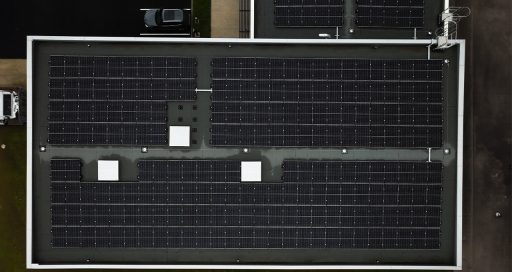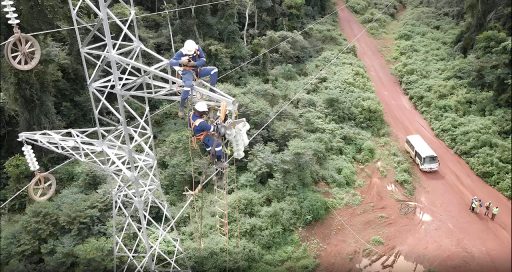Batteries – generally lithium-ion batteries – used to store energy have become a key partner of photovoltaic solar, wind, and hybrid power plants, especially in areas that are not connected to a strong grid.![]()
“The need to store electricity is not new,” says Antoine de Broves, Technical & Innovation manager at Omexom, the VINCI Energies brand dedicated to the energy transition. Because generation and consumption must be balanced at all times, “Dams and pumped storage facilities have long been used to store not electrons but the potential energy to activate them,” he says.
But the need for storage has increased dramatically with the expanded use of renewable sources. Solar and wind energy, which depend on sunlight and weather conditions, deliver intermittent power, at times that do not always coincide with consumption in the case of photovoltaic solar (inactive during peak consumption in the evening).
“Batteries, with costs that have come down sufficiently to make industrial rollout possible, have become a key way to store renewable energy”
This mismatch means that solutions must be found to store electricity from renewable sources for later use. Solutions include “batteries, with costs that have come down sufficiently to make industrial rollout possible, which have become a key way to store renewable energy,” says Antoine de Broves.
The demand for batteries tracks the growth of renewables. Global renewable capacity is expected to increase sharply from 165 gigawatts in 2016 to 929 gigawatts (GW) by 2022, according to the World Bank. Meanwhile, the International Renewable Energy Agency (IRENA) has estimated the battery storage requirement at 150 GW and the pumped storage requirement at 325 GW in 2030.
Mobilising the World Bank
To support affordable rollout of the technology in middle-income and developing countries, the World Bank has set up the Accelerating Battery Storage for Development programme. The World Bank’s goal is to finance 17.5 gigawatt (GW) of battery storage capacity by 2025 – more than triple the approximately 5 GW currently installed in all developing countries.
To do this, the World Bank is committing $1 billion in financing for the programme, and aims to mobilise at least another $3 billion from the public and private sectors.
Recalling that Omexom has experience in installing photovoltaic solar plants, particularly in Africa, Antoine de Broves confirms the strategic importance of storage in these regions, “especially when the power plants are not connected to a national grid,” he adds.
“Storage is used for more than solar energy,” adds the Omexom Technical & Innovation manager, who mentions projects using generator sets in remote regions and more elaborate systems combining fuel oil and photovoltaic generation, such as those in Senegal. Natively, multi-functional batteries can help regulate frequency and voltage, and optimise generator set operation. Given the high cost of transporting fuel to remote regions, the addition of a hybrid power plant to generator production can pay for itself “very rapidly”, while the payback period in interconnected regions is 10 years, says Antoine de Broves, providing another talking point in favour of the battery.





